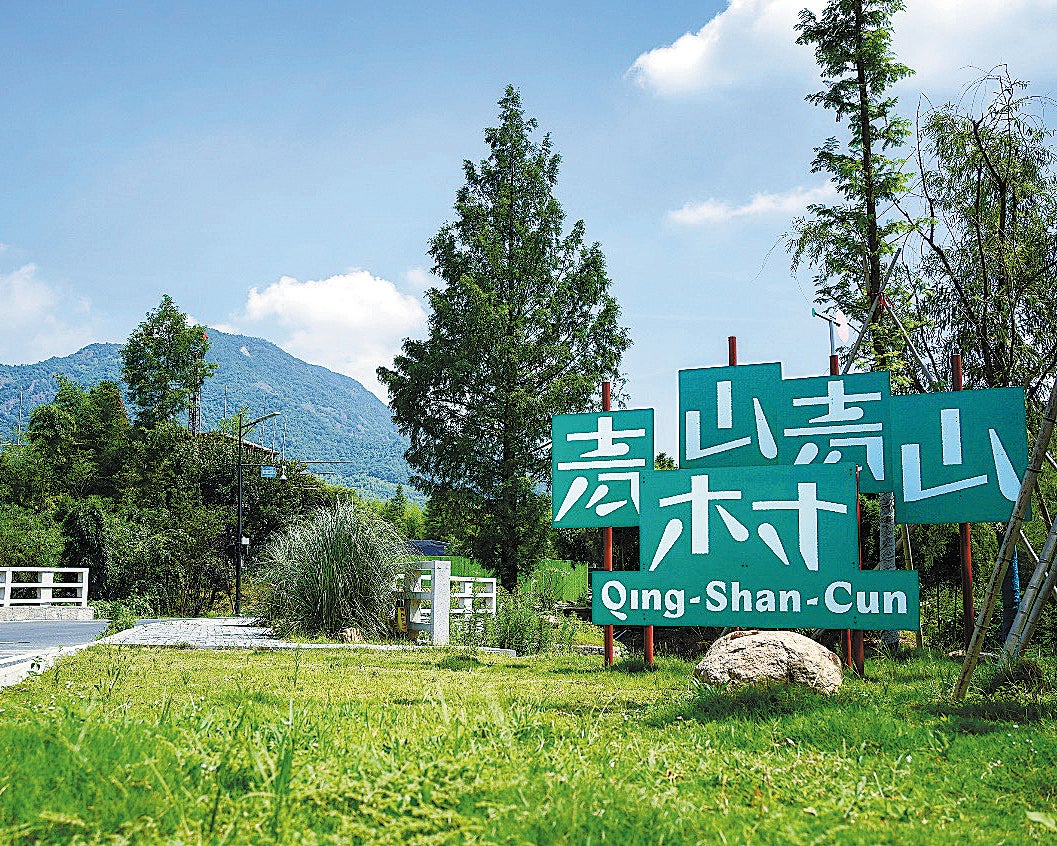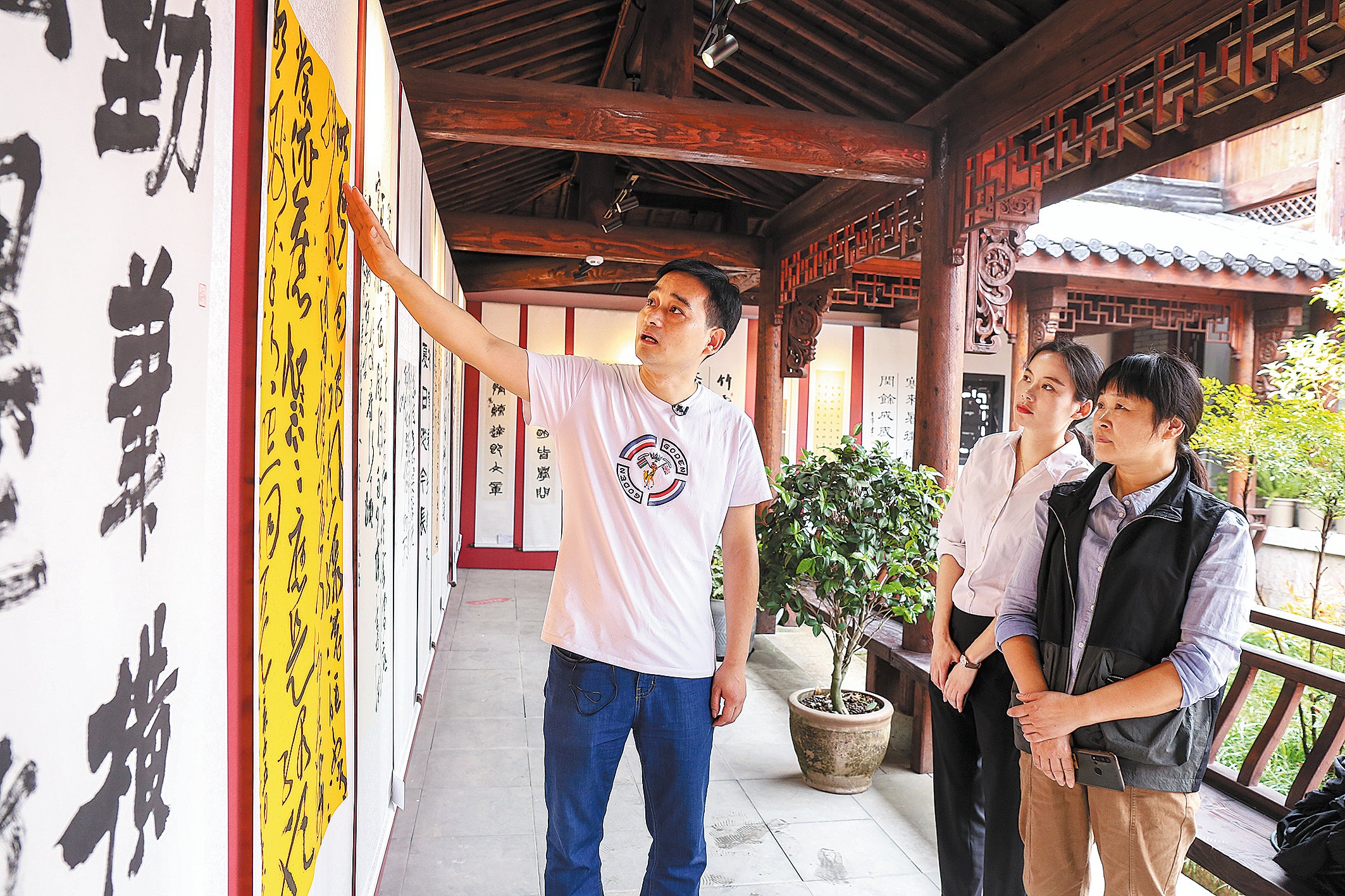Creativity paints a vibrant rural art scene
THE ARTICLES ON THESE PAGES ARE PRODUCED BY CHINA DAILY, WHICH TAKES SOLE RESPONSIBILITY FOR THE CONTENTS

Set foot in Qingshan, a village nestled amid lush green mountains, and visitors are greeted by its artistic vibe.
About 25 miles to the northwest of downtown Hangzhou city and in the Yuhang district of Zhejiang province, Qingshan’s roadsides and fields are studded with distinctive art installations.
A nearby dam gives a bird’s-eye view of the art, which ranges from vivid paintings and balloons in the shape of eggs to bamboo-woven Mobius strips.
“Each of them has a theme,” said Lin Hong, a senior village official. For example, the egg-shaped piece seeks to increase public awareness of the protection of biodiversity, while the Mobius strip embodies the never-ending symbiosis of bamboo culture and bamboo weaving techniques.
The pieces of public art are scattered throughout every corner of the village, carefully sited in relation to the surrounding environment, and wait for visitors to explore them by foot.
The village’s buildings add traditional craftsmanship to the artistic atmosphere. “The exterior of the visitor centre is wrapped in bamboo, and blends traditional craftsmanship with modern design,” Lin said. “It is both aesthetically pleasing and environmentally friendly.”
Within walking distance, a design-themed library created inside a disused auditorium enables visitors to appreciate the process of embroidery, lacquer art, woodblock carving and natural dyeing, and to develop a good understanding of the beauty of traditional crafts.
Two of the village’s many old buildings have been transformed into art spaces, thanks to a group of craftsmen, artists and curators, who have settled in Qingshan village over the years.
One of the groups, from the Rongsheji craftsmanship workshop, is dedicated to incorporating traditional materials and construction techniques into village buildings.
“We found a lot of creative inspirations in the village,” said Zhang Lei, who is in charge of the workshop’s operations, and who has been living in Qingshan village for the past five years. “Over the years, team members have come and gone, but in the end, those who have stayed are the ones who truly enjoy rural life.”
Efforts by local authorities to improve infrastructure and the rural environment – especially water quality – since 2014, and the encouragement of multi-sector development such as rural tourism, have attracted designers and artists from all over the country.
Zhang has also helped around 30 villagers create woven bamboo artwork, to help increase their incomes. The handicrafts the artists and villagers have produced together have been shown at exhibitions at home and abroad, including at the Milan Design Week and the Design Shanghai.
“They have also been sold on the market, where they have made twice the profit of similar competitive products,” Lin said.
The village’s design industry has accelerated the integration of culture and tourism, which has been bringing in around 30,000 visitors a year. Its collective annual income has now risen past 1.5 million yuan (£168,000).
Developments in Qingshan village are part of the efforts by Yuhang district to explore the coexistence between art and rural life and empower the village cultural industry.
About an hour’s drive to the south, enormous bamboo forests surround Zijing village, which produces about three million flutes every year.
Going deeper in the village, a museum in the shape of a music note jumps out. It was built on the site of a former bamboo factory, and now presents a vivid walk through local bamboo and flute history.

About 19 miles to the northeast of Zijing, calligraphy culture has taken shape in Nanshan village.
Local authorities set up a calligraphy association in 2015, which inspired many villagers to pick up the art form. Nanshan was designated a calligraphy village last year.
Those artistic endeavours have vitalised rural resources, and helped promote the integrated development of agriculture, culture and tourism, and ultimately, the rural economy.
During the first six months of this year, the collective operating income of villages in Yuhang rose to 506 million yuan (£56.6 million), and disposable incomes rose to 30,257 yuan (£3,380) per person, an increase of 6.5 per cent year-on-year, according to the district.
